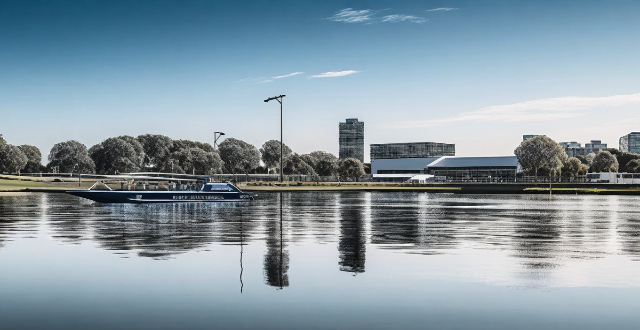Climate adaptation policies play a crucial role in water resource management by assessing climate change impacts, developing adaptation strategies, implementing and monitoring measures, securing finance and investment, and promoting education and awareness. These efforts aim to reduce vulnerabilities of human and natural systems to climate change, focusing on risks such as temperature changes, precipitation variability, and extreme events. Adaptation strategies include water conservation, infrastructure adaptations, legal and institutional frameworks, pilot projects, monitoring and evaluation, capital investment, operational costs, public education campaigns, and capacity building. This integration ensures water security for future generations by addressing the complex interactions between climate change and water resources.

How do Climate Adaptation Policies Integrate Water Resource Management?
Climate adaptation policies aim to reduce the vulnerability of human and natural systems to the impacts of climate change. Water resource management is a critical component of these policies, as water resources are highly sensitive to changes in climatic conditions. Here's how climate adaptation integrates with water resource management:
1. Assessment of Climate Change Impacts on Water Resources
*Identification of Risks*
- Temperature Changes: Alterations in temperature patterns can affect snowmelt, evaporation rates, and water demand.
- Precipitation Variability: Changes in precipitation patterns, including intensity, frequency, and type (rain vs. snow), directly impact water availability and quality.
- Extreme Events: Floods and droughts can stress water systems, requiring adaptive management strategies.
*Risk Assessment Tools*
- Modeling: Hydrological models predict future water availability under various climate scenarios.
- Scenario Planning: Developing scenarios helps prepare for a range of potential future climate conditions.
2. Development of Adaptation Strategies
*Water Conservation and Efficiency Measures*
- Efficient Use: Promoting water-efficient technologies and practices in agriculture, industry, and households.
- Reuse and Recycling: Encouraging the reuse of treated wastewater for non-potable uses.
*Infrastructure Adaptations*
- Flexible Design: Designing infrastructure that can accommodate changing water levels and flows.
- Desilting and Maintenance: Regular maintenance of reservoirs and riverbeds to cope with sedimentation issues exacerbated by extreme weather events.
*Legal and Institutional Frameworks*
- Water Rights and Allocations: Reviewing and updating water rights to ensure they reflect changing availability and demand.
- Cooperation and Governance: Enhancing cooperation between different water-using sectors and governance structures.
3. Implementation and Monitoring
*Pilot Projects and Demonstration Programs*
- Testing Innovations: Testing new technologies or management practices at a smaller scale before full implementation.
- Community Involvement: Engaging local communities in adaptation projects to ensure their sustainability and effectiveness.
*Monitoring and Evaluation*
- Data Collection: Gathering data on water quantity and quality to track changes over time.
- Performance Metrics: Establishing metrics to evaluate the success of adaptation measures.
4. Finance and Investment
*Capital Investment*
- Funding for Infrastructure: Allocating funds for building or upgrading water management infrastructure.
- Investment in Research: Supporting research into climate impacts on water resources and innovative adaptation solutions.
*Operational Costs*
- Maintenance Budgets: Ensuring there are adequate budgets for ongoing maintenance and operation of water systems.
- Subsidies and Incentives: Providing financial incentives for water conservation and efficiency improvements.
5. Education and Awareness
*Public Education Campaigns*
- Raising Awareness: Informing the public about the impacts of climate change on water resources and the importance of conservation.
- Capacity Building: Training professionals and community members in water management techniques suitable for a changing climate.
Integrating climate adaptation into water resource management is an ongoing process that requires interdisciplinary collaboration, continuous monitoring, and adaptive decision-making. By understanding the complex interactions between climate change and water resources, policymakers can develop effective strategies to ensure water security for future generations.